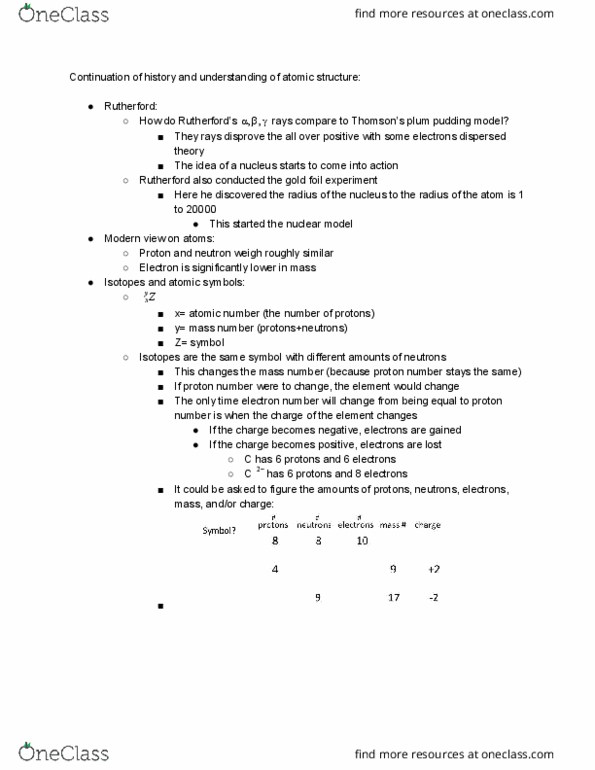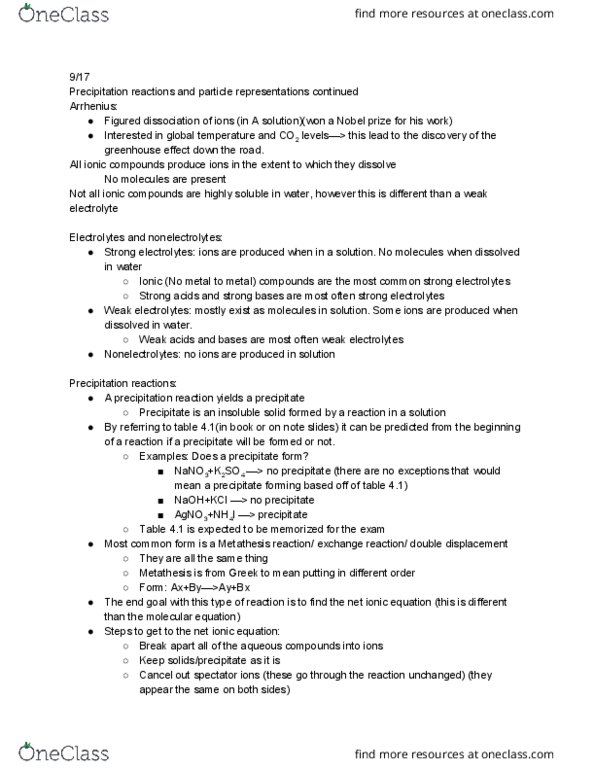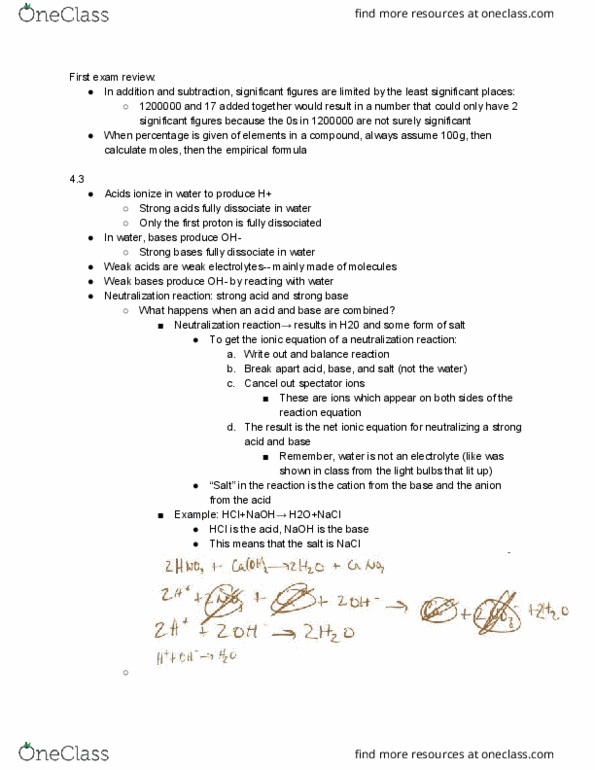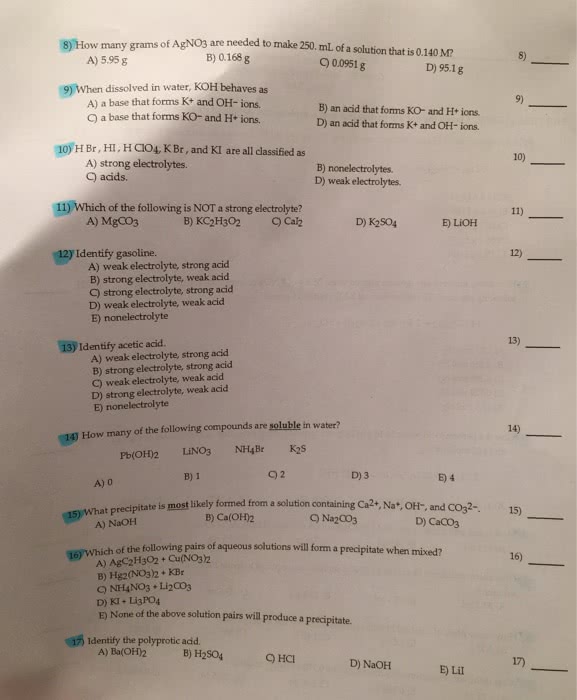CHEM 1210 Lecture Notes - Lecture 12: Sodium Hydroxide, Strong Electrolyte, Lithium Hydroxide
CHEM 1210 verified notes
12/46View all

9/17
Precipitation reactions and particle representations continued
Arrhenius:
● Figured dissociation of ions (in A solution)(won a Nobel prize for his work)
● Interested in global temperature and CO2 levels—> this lead to the discovery of the
greenhouse effect down the road.
All ionic compounds produce ions in the extent to which they dissolve
No molecules are present
Not all ionic compounds are highly soluble in water, however this is different than a weak
electrolyte
Electrolytes and nonelectrolytes:
● Strong electrolytes: ions are produced when in a solution. No molecules when dissolved
in water
○ Ionic (No metal to metal) compounds are the most common strong electrolytes
○ Strong acids and strong bases are most often strong electrolytes
● Weak electrolytes: mostly exist as molecules in solution. Some ions are produced when
dissolved in water.
○ Weak acids and bases are most often weak electrolytes
● Nonelectrolytes: no ions are produced in solution
Precipitation reactions:
● A precipitation reaction yields a precipitate
○ Precipitate is an insoluble solid formed by a reaction in a solution
● By referring to table 4.1(in book or on note slides) it can be predicted from the beginning
of a reaction if a precipitate will be formed or not.
○ Examples: Does a precipitate form?
■ NaNO3+K2SO4 —> no precipitate (there are no exceptions that would
mean a precipitate forming based off of table 4.1)
■ NaOH+KCl —> no precipitate
■ AgNO3+NH4I —> precipitate
○ Table 4.1 is expected to be memorized for the exam
● Most common form is a Metathesis reaction/ exchange reaction/ double displacement
○ They are all the same thing
○ Metathesis is from Greek to mean putting in different order
○ Form: Ax+By—>Ay+Bx
● The end goal with this type of reaction is to find the net ionic equation (this is different
than the molecular equation)
● Steps to get to the net ionic equation:
○ Break apart all of the aqueous compounds into ions
○ Keep solids/precipitate as it is
○ Cancel out spectator ions (these go through the reaction unchanged) (they
appear the same on both sides)





